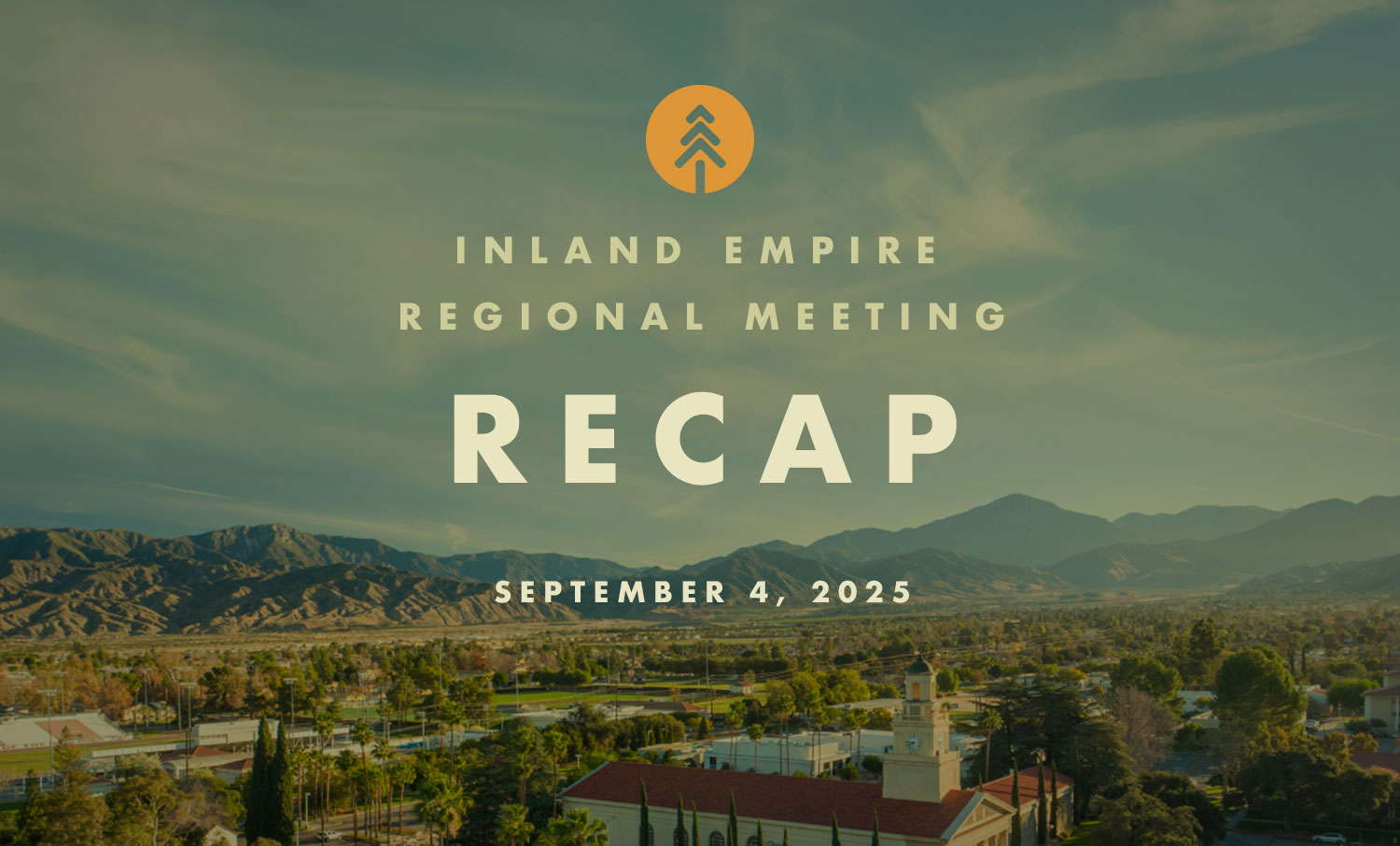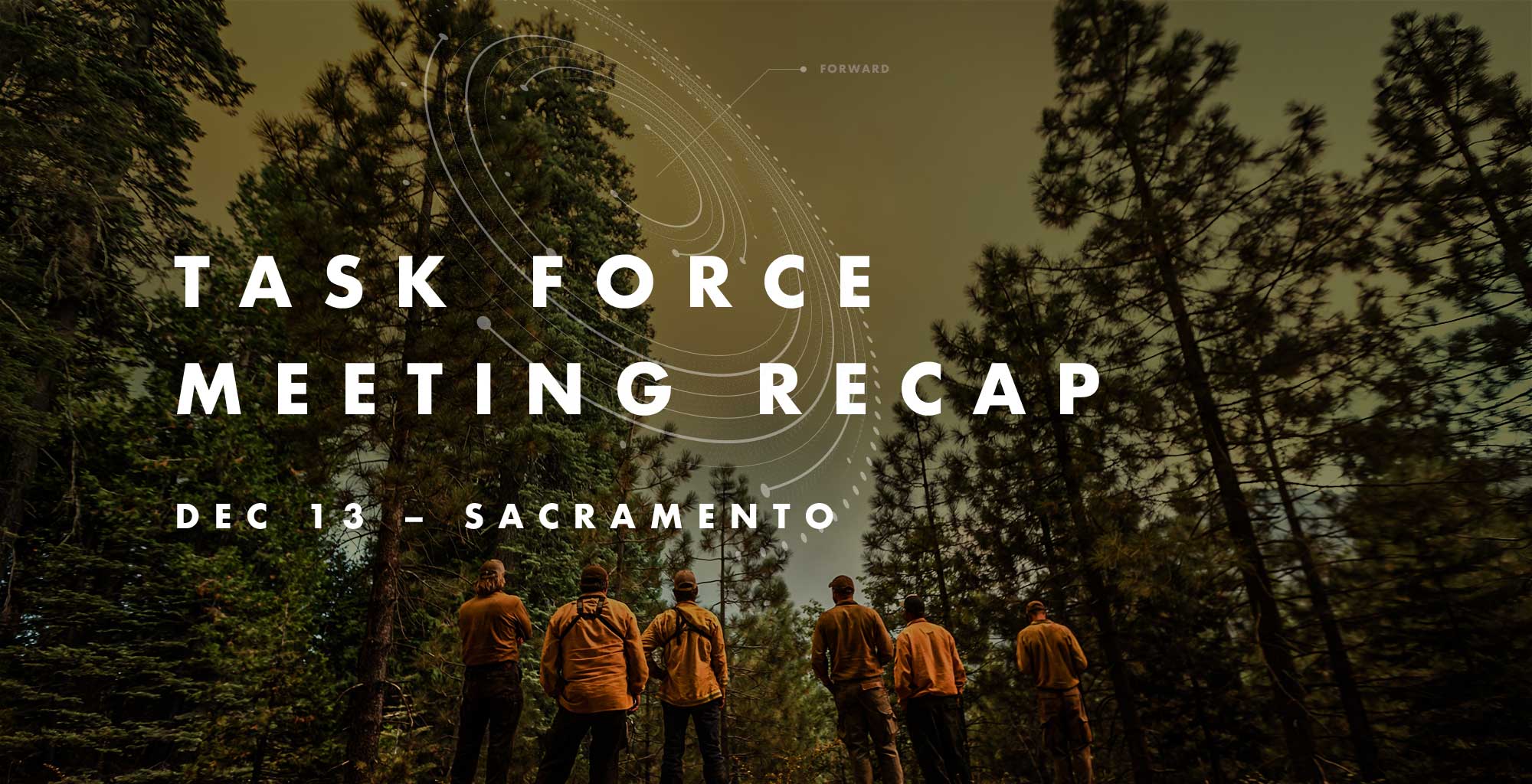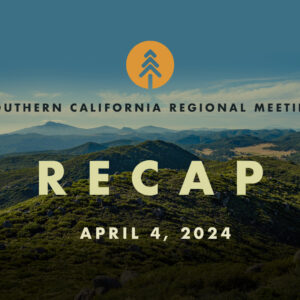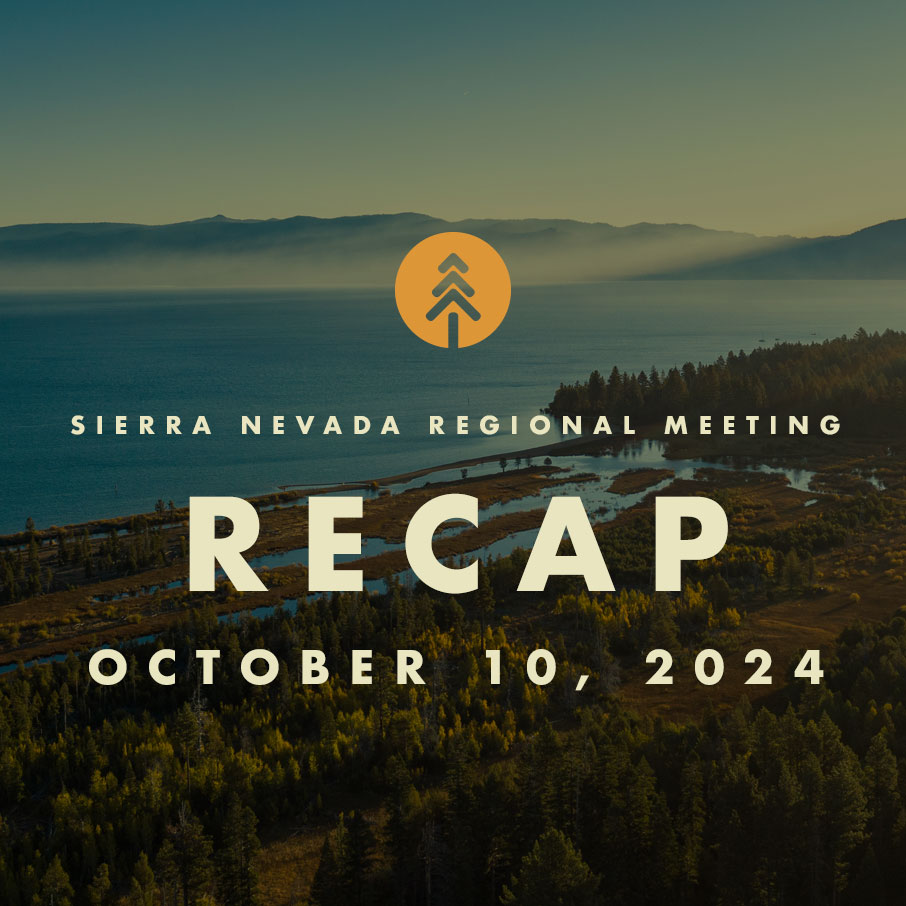Recap of The Inland Empire Regional Meeting
INLAND EMPIRE REGIONAL MEETING RECAP
September 4, 2025
Nearly 400 people filled the Orton Center at the University of Redlands, with more than 350 additional participants joining online, for the Wildfire & Forest Resilience Task Force’s Inland Empire Regional Meeting on September 4. Hosted by the Inland Empire Community Foundation and the Inland Empire Resource Conservation District, the gathering spotlighted issues of particular importance to Southern California and the Inland Empire.
If you couldn’t make it in person, or missed the real-time webinar, video recordings are available below.
INLAND EMPIRE REGIONAL MEETING AGENDA HIGHLIGHTS
- Wildfire Resilience in the Inland Empire: Collaborative Efforts Producing Results – State, federal, and nonprofit partners highlighted the Inland Empire’s unique landscape and discussed how partnerships and fuels treatments boosted wildfire preparedness and response in the 2024 fire season.
- Southern California’s Roadmap to Resilience: Regional Strategies and Partnerships – Regional leaders will highlight how cooperative agreements and partnerships turned strategies into action on protecting communities, reducing ignitions, and restoring landscapes.
- Tracking, Funding, and Measuring Progress in Southern California: Experts will explore how new approaches are broadening funding sources and shifting wildfire resilience tracking from acres to outcomes.
Welcome & Opening Remarks
• Wade Crowfoot, CA Natural Resources Agency
• Jason Kuiken, U.S. Forest Service
• Task Force Executive Committee
• Adrienne McCormick, University of Redlands
• Michelle Decker, Inland Empire Community Foundation
• Joe Tyler, CAL FIRE
Director's Report
Patrick Wright, Task Force
Wildfire Resilience in the Inland Empire: Collaborative Efforts Producing Results
Moderator: Kathy Peterson, Southern California Ignition Reduction Program
• Dania Gutierrez, National Forest Foundation
• Shane Littlefield, CAL FIRE San Bernardino Unit
• Danelle Harrison, San Bernardino National Forest
Video Screening: 2024 Success Stories
Moderator: Jeff Heys, U.S. Forest Service
Southern California’s Roadmap to Resilience: Regional Strategies and Partnerships
Moderator: Jeff Heys, U.S. Forest Service
• Michael O’Connell, Irvine Ranch Conservancy
• Lisa Worthington, Caltrans
• Heather Dyer, San Bernardino Valley Municipal Water
• Sal Reyes, San Bernardino National Forest
Tracking, Funding, and Measuring Progress in Southern California
Moderator: Dania Gutierrez, National Forest Foundation
• John Battles, UC Berkeley
• Joe Flannery, Vibrant Planet
• Matt Sloggy, USFS Pacific SW Research Station
• Nick Wobbrock, Blue Forest
• Will Madrigal, Jr., Climate Science Alliance
Closing Remarks
• Executive Committee
June 6 Sacramento Meeting Recap
SACRAMENTO TASK FORCE MEETING RECAP
June 6, 2025
The Task Force quarterly meeting at the California Natural Resources Agency in Sacramento brought together regional leaders for a provocative conversation about how we can most efficiently expend state dollars to meet the state’s wildfire needs.
Thanks to the Governor and the Legislature more than $1.5 billion is available to spend on wildfire resilience projects throughout the state. At the Task Force meeting, a panel of regional leaders offered their insights on how to most efficiently and effectively expend those funds to meet their priorities, along with how they are organizing to align with state goals and drive rapid wildfire resilience work on the ground.
A second panel of agency leaders discussed how they’re coordinating across programs and funding sources, including Prop 4, to support regional partners and accelerate on-the-ground wildfire resilience.
Welcome & Executive Remarks
Co-chairs
- Wade Crowfoot, California Natural Resources Agency
- Chris Feutrier, U.S. Forest Service
Task Force Executive Committee
- Anale Burlew, CAL FIRE
- Joe Stout, Bureau of Land Management
- Katy Landau, California Environmental Protection Agency
- Don Hankins, Indigenous Stewardship Network
- Abby Edwards, Office of Land Use and Climate Innovation
- Doug Teeter, Rural County Representatives of California
Director’s Report
Director’s Report
Patrick Wright, Wildfire and Forest Resilience Task Force
Regional Progress in Planning & Priority Setting
Regional Progress in Planning & Priority Setting
Moderator: Angie Lottes, CA State Parks
Southern California: Jeff Heys, U.S. Forest Service
Sierra Nevada: Sarah Campe, Sierra Nevada Conservancy – Paul Ringold, Giant Sequoia Lands Coalition
Northern California: Karen Gaffney, North Coast Resource Partnership – Alison Blodorn, Inner Coast Collaborative
Central Coast: Kostoula Vallianos, CA Coastal Conservancy – Timothy Federal, San Mateo RCD
Agency Preparations for Regional Funding
Moderator: Nick Goulette, Watershed Center
Lisa Lien-Mager, CA Natural Resources Agency
Shanna Atherton, Department of Conservation
Alan Talhelm, CAL FIRE
Angie Avery, Sierra Nevada Conservancy
Evyan Borgnis Sloane, CA Coastal Conservancy
Rebecca Fris, Wildlife Conservation Board
Closing Remarks
Task Force Executive Committee
Recap of The Spring 2025 Regional Meeting in San Rafael
SPRING 2025 REGIONAL MEETING RECAP
March 27, 2025
A full-capacity audience of over 400 people came together in Marin County (with over 300 joining online) for the Wildfire & Forest Resilience Task Force’s Spring 2025 Regional Meeting. Hosted by Marin Wildfire Prevention Authority and Fire Safe Marin, the agenda and activities focused on critical issues related to community wildfire risk reduction and landscape management in Marin County and lessons from the Los Angeles fires.
If you couldn’t make it in person, or missed the real-time webinar, video recordings are available below.
SPRING REGIONAL MEETING AGENDA HIGHLIGHTS
- Lessons from the Los Angeles Fires: Presenters highlighted key lessons from the 2025 LA wildfires relating to response, community safety, ecosystem resilience and home hardening.
- Building Resilient Communities in Marin and Beyond: Regional leaders shared their progress and priorities for protecting communities since the 2017 North Bay wildfires.
- Director’s Report: Director Wright presented the Task Force’s 2025 Key Deliverables outlining the highest priority actions underway this year to increase wildfire resilience across the state.
- Emergency Proclamation on Wildfire Prevention Projects: Secretary Crowfoot discussed the Governor’s State of Emergency to expedite projects intended to protect California communities from catastrophic wildfire.
- Tools for Improving Community Resilience: A panel of experts explored local and state-level initiatives that are defining data needs, driving down wildfire risk, and influencing access to affordable insurance.
- Expanding Career Pathways in Fire & Forestry: Recent graduates of the FIRE Foundry program shared perspectives on priorities for employee-centered career and workforce development programs.
Welcome & Opening Remarks
• Wade Crowfoot, CA Natural Resources Agency
• Jennifer Eberlien, USDA Forest Service
• Task Force Executive Committee
• Lorelle Ross, Federated Indians of Graton Rancheria
• Damon Connolly, Assemblymember, District 12
Lessons Learned from the Los Angeles Fires
• Alexandra Syphard, Conservation Biology Institute
• Steve Hawks, Insurance Institute for Business & Home Safety
Building Resilient Communities in Marin & Beyond
• Moderator: Jacy Hyde, CA Fire Safe Council
• Jason Weber, Marin County Fire
• Julie McMillan, Ross Town Council
• Mark Brown, Marin Wildfire Prevention Authority
• Claire Mooney, Golden Gate National Parks Conservancy
Director's Report: 2025 Key Deliverables
• Patrick Wright, Task Force
Emergency Proclamation on Wildfire Prevention Projects: Next Steps
• Wade Crowfoot, CA Natural Resources Agency
Tools for Improving Community Resilience
• Moderator: Chris Anthony, UCSD ProWESS Center
• Daniel Berlant, CAL FIRE
• Genevieve Biggs, Moore Foundation
• Jason Brooks, Fire Aside
• John Battles, UC Berkeley
Expanding Career Pathways in Fire & Forestry
• Moderator: Jason Weber, Marin County Fire
• Mimi Choudhury, FIRE Foundry
• Alfredo Campos, FIRE Foundry Graduate
• Meily Jimenez, FIRE Foundry Graduate
• Gabe Cruz, Chula Vista Fire Department
Closing Remarks
• Executive Committee
Planscape Adds Free Tool to Model Treatment Impacts
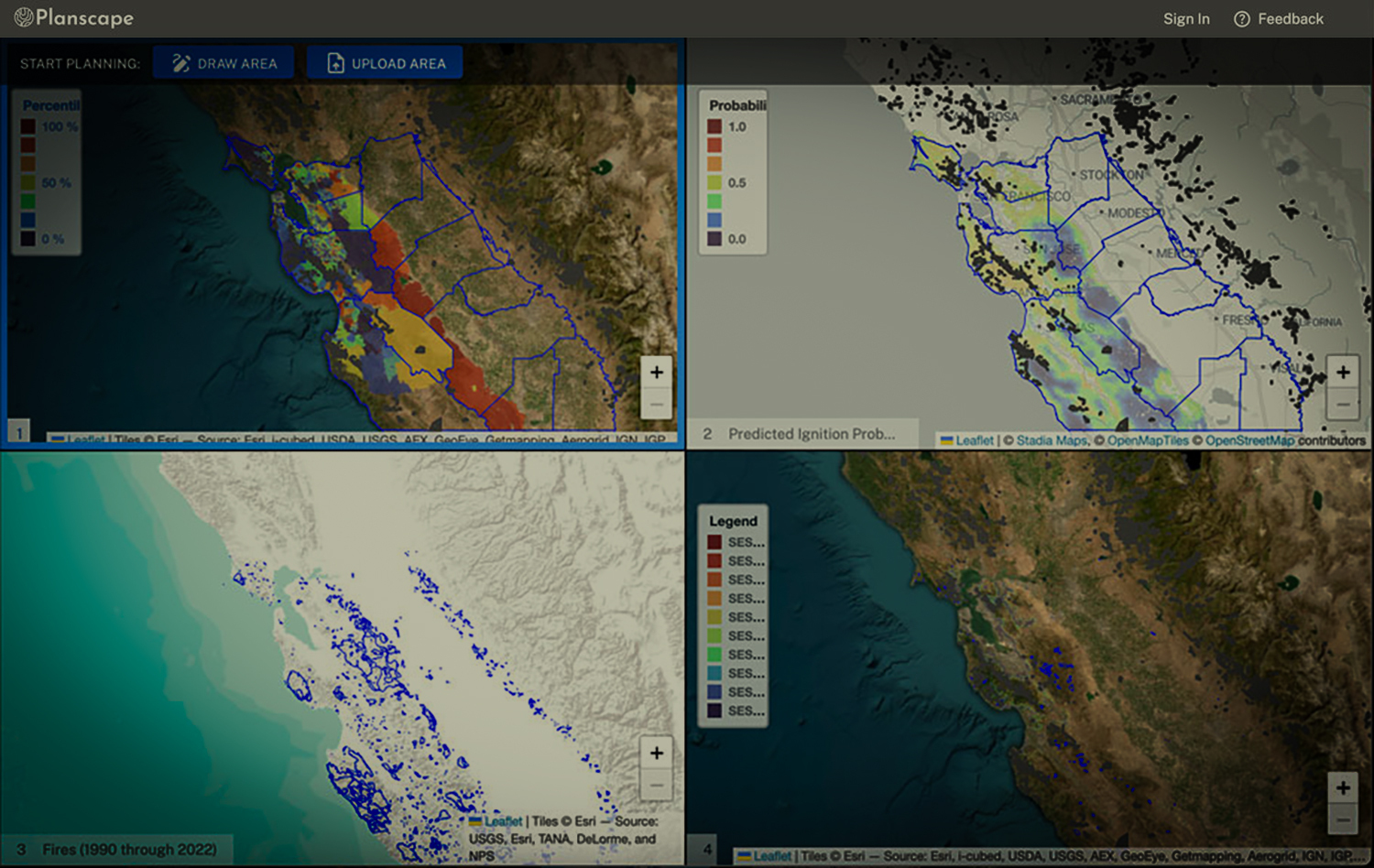
Planscape Adds Free Tool to Model the Impact of Wildfire Resilience Treatments
March 24, 2025 – The Planscape Partnership, a collaboration of public and non-profit organizations, announced the release of Planscape Treatment Effects, the latest update to the Planscape collaborative tool which adds a new suite of features that enables land managers and collaboratives to quickly and efficiently model and report out on landscape resilience treatments. Built in partnership with the U.S. Forest Service (USFS), Google.org, and the State of California, Planscape Treatment Effects allows land managers to run treatment scenarios, see 20-year projections of scenario outcomes, optimize resources, and share data instantly.
With Planscape Treatment Effects, land managers can:
- Plan and compare management options by fuel treatment type, location, and sequence.
- Understand the impact of treatments on outputs such as canopy cover, large tree biomass, and fire intensity in forests, as well as rate of spread and flame length in non-forested areas.
- View outputs over the next 5, 10, 15, and 20 years.
- Leverage the best science and models to run models directly in a web browser.
New Report On Effects of Forest Management on Carbon Storage
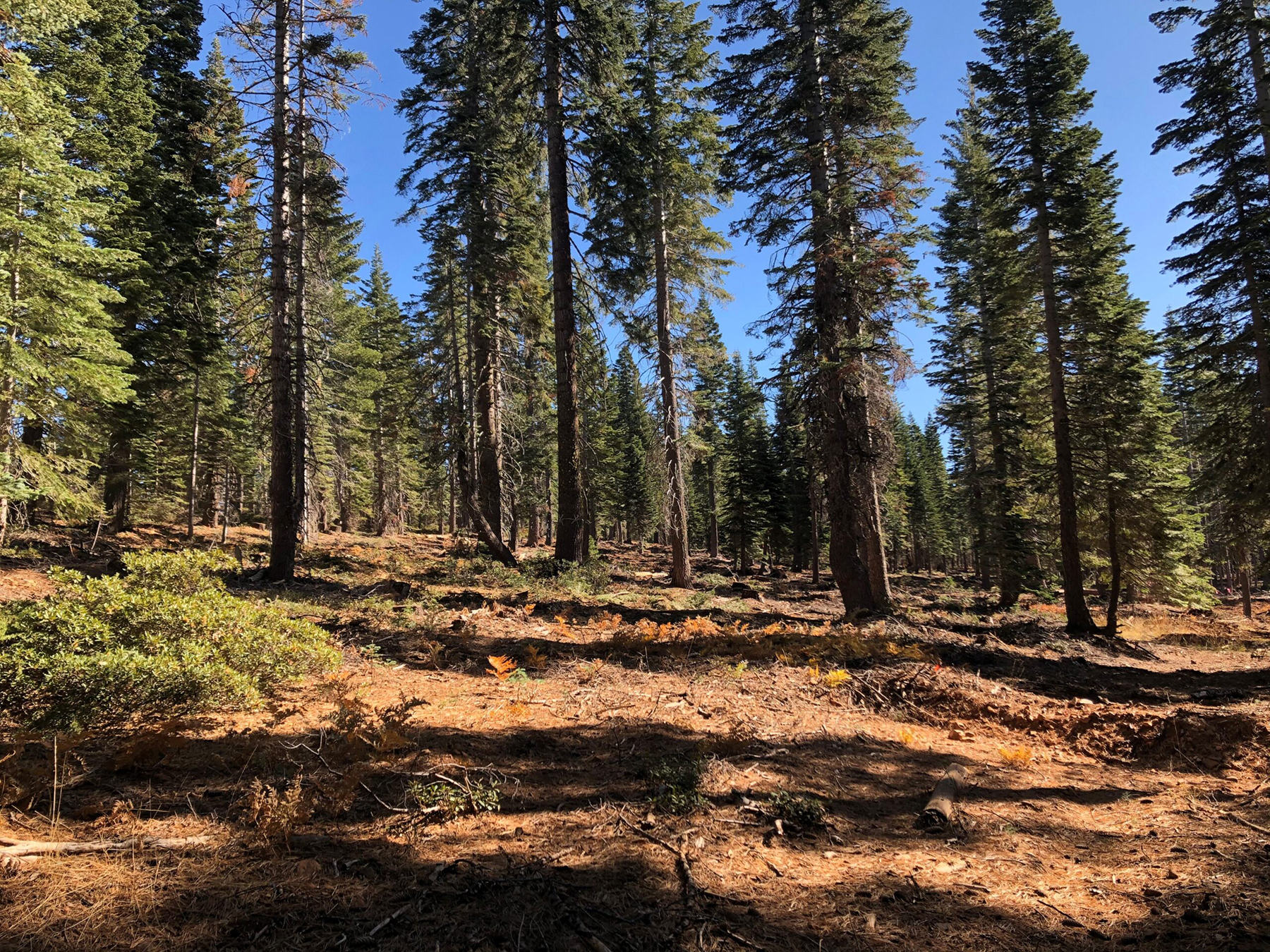
New Report on Effects of Forest Management on Carbon Storage in California
February 18, 2025 – American Forests, USFS, CAL FIRE, The Northern Institute of Applied Climate Science, and Michigan State University recently released a collaborative report on the effects of forest management and wood utilization on carbon sequestration and storage in California. The report provides comprehensive forest sector carbon modeling results, estimated treatment costs, wood product revenue, and wood processing capacity constraints for a broad range of forest management scenarios to help identify climate-smart forestry (CSF) practices. The modeling results provide information about forest climate mitigation and adaption opportunities that will be utilized to help inform the 2025 California Wildfire and Forest Resilience Task Force Action Plan
Notably, the report:
- Identifies 11 million acres in California as having high or very high wildfire hazard potential.
- Emphasizes the importance of wood utilization to improve carbon benefits.
- Predicts that under a business-as-usual scenario, California could lose up to up to 48% of forest area & 50% of forest carbon by 2071.
- Models scenarios that include a portfolio of actions that drastically reduce predicted losses to forest areas and forest carbon.
Task Force Releases 2025 Key Deliverables
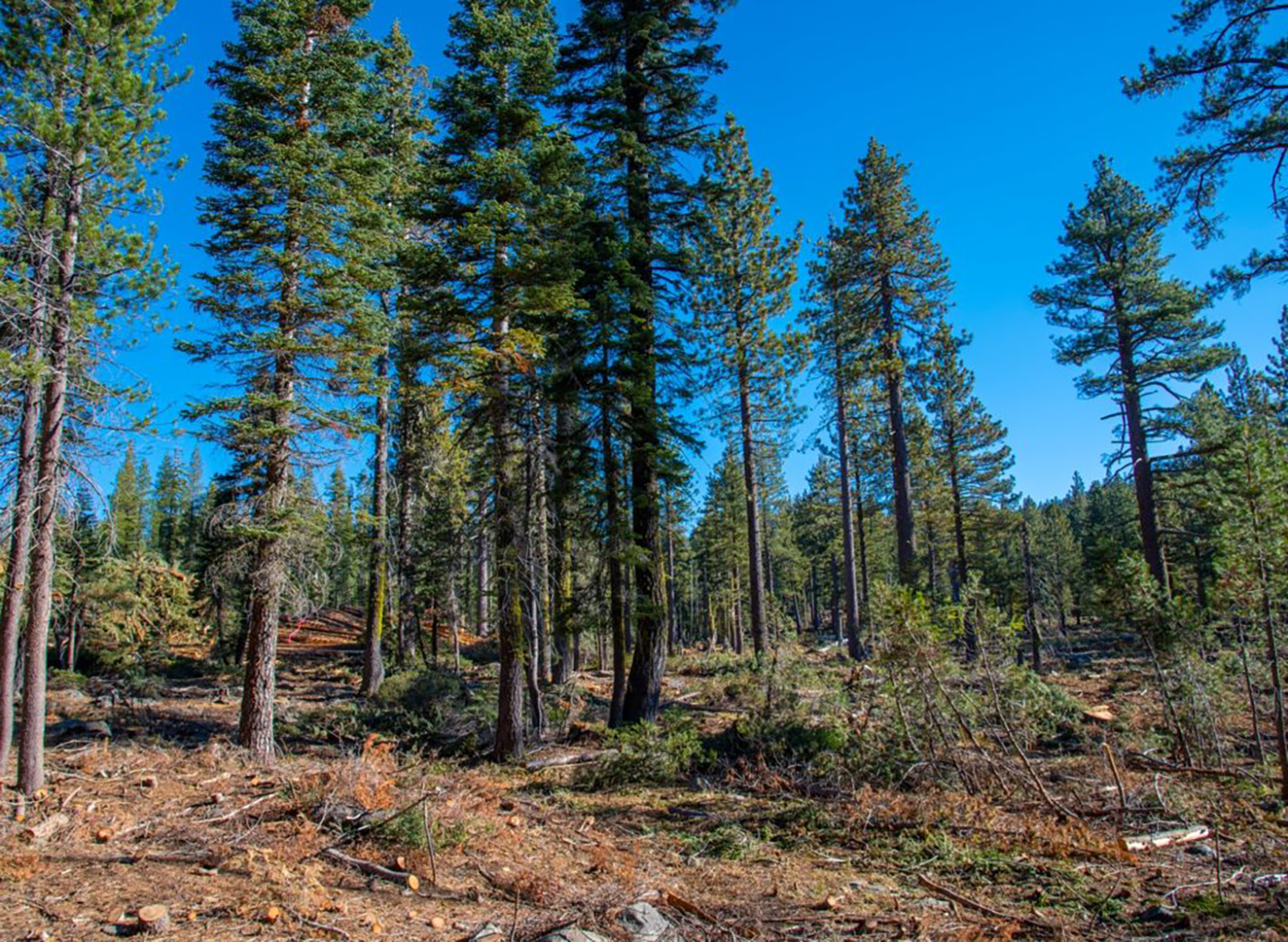
Task Force Releases 2025 Key Deliverables to Outline California’s Top Priorities Underway to Increase Wildfire Resilience
March 24, 2025 – The Task Force released its 2025 Key Deliverables, which include California’s top priorities and initiatives now underway to continue promoting wildfire and community resilience across the state.
The deliverables outline the highest priority actions underway this year to achieve the commitments in the 2021 Wildfire and Forest Resilience Action Plan and to advance key new initiatives that will be highlighted in the forthcoming update of the Action Plan to be released later this year.
The deliverables focus on actions that will improve home and community wildfire resilience, expand landscape-scale resilience programs, streamline regulatory processes, expand timber production and more.
Task Force Director Patrick Wright provided an overview of the 2025 Key Deliverables during the Director’s Report at the March 27 Spring Region Meeting. Click under Resources to the see the video.
Governor Newsom Signs Executive Order to Further Improve Community Hardening
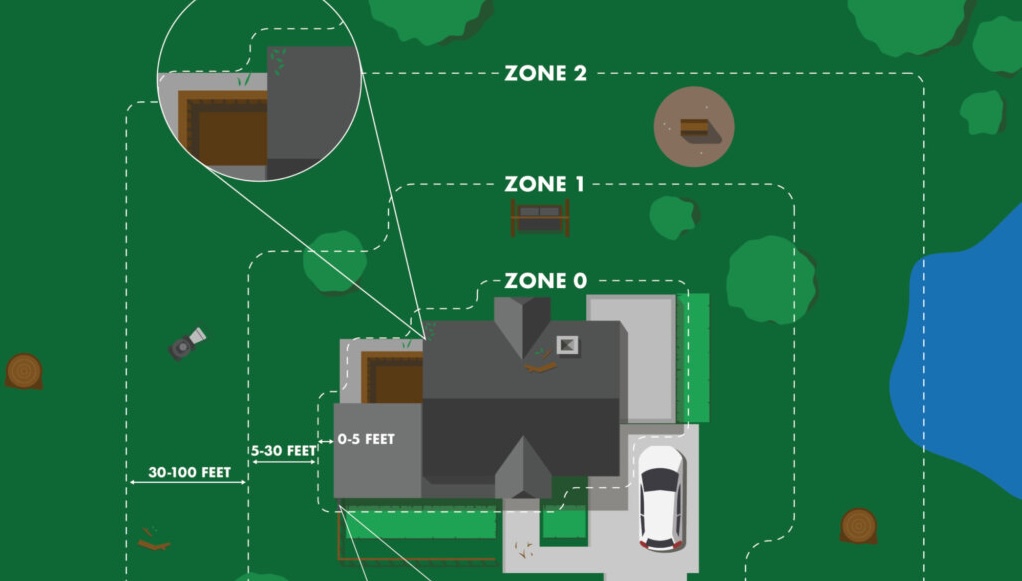
Governor Newsom Signs Executive Order to Further Improve Community Hardening and Wildfire Mitigation
On February 6, Governor Newsom signed an executive order to launch key initiatives to continue adapting to future wildfires and strengthen community resilience to urban conflagration (large destructive fires that spread beyond natural or artificial barriers wherein structures themselves become the fuel that spreads the fire). The executive order:
- Directs the State Board of Forestry to accelerate its work to adopt regulations known as “Zone 0,” which will require an ember-resistant zone within 5 feet of structures located in the highest fire severity zones in the state.
- Tasks the Office of the State Fire Marshal with releasing updated Fire Hazard Severity Zone maps for areas under local government responsibility, adding 1.4 million new acres of land into the two higher tiers of fire severity, which will update building and local planning requirements for these communities statewide.
- Requires CAL FIRE and Cal OES to work with local, federal and tribal partners on improvements to the Federal resource ordering system for wildfire response.
Leading Scientists Shared Latest Findings on Wildfire Resilience at December 13 Meeting. Recap Now Available.
SACRAMENTO TASK FORCE MEETING RECAP
December 13, 2024
The Task Force quarterly meeting at the California Natural Resources Agency in Sacramento featured leading scientists discussing their findings on what is working and what we need to improve on to address California’s wildfire crisis.
The lively and candid conversations challenged California’s climate leaders to take a hard look at existing priorities and ensure the latest science is being used to inform the state’s policies to reduce the risks of catastrophic wildfire and restore healthy natural landscapes in the face of climate change. Findings shared at the meeting were part of a Science Synthesis that will help inform the Task Force’s 2025 Action Plan.
Highlights Include:
Forest & Rangeland Assessment: Jamie Lydersen from CAL FIRE provided a preview on the upcoming release of an updated FRAP report that informs leaders and land managers at a statewide level using data-based indicators to show current state and recent trends on California forests and rangelands.
Synthesis of Science
Through a series of panel discussions, members of the Task Force’s Science Advisory Panel provided highlights from a synthesis of scientific findings since 2021 on issues related to wildfire and landscape resilience that will help inform the Task Force’s 2025 Action Plan. Topics covered included:
- How did we get here and why does it matter?
- What have we learned about what works and where we go from here?
- Part 1: Landscape Resilience & Community Protection
- Part 2: Post-Fire Considerations
Welcome & Executive Remarks
Co-chairs
- Wade Crowfoot, California Natural Resources Agency
- Jennifer Eberlien, U.S. Forest Service
Task Force Executive Committee
- Anale Burlew, CAL FIRE
- Joe Stout, Bureau of Land Management
- Katy Landau, California Environmental Protection Agency
- Don Hankins, Indigenous Stewardship Network
- Abby Edwards, Office of Land Use and Climate Innovation
- Doug Teeter, Rural County Representatives of California
Director’s Report
Director’s Report
Patrick Wright, Wildfire and Forest Resilience Task Force
Forest and Rangeland Assessment
Forest and Rangeland Assessment
Jamie Lydersen, CAL FIRE
Science Synthesis: How did we get here and why does it matter?
Science Synthesis: How did we get here and why does it matter?
Moderator: Steve Ostoja, USDA Climate Hub
Chris Fettig, U.S. Forest Service, Pacific Southwest Research Station
Lenya Quinn-Davidson, U.C. Agriculture & Natural Resources
Science Synthesis: What have we learned about what works and where we go from here?
Part 1: Landscape Resilience & Community Protection
Moderator: Steve Ostoja, USDA Climate Hub
Emily Schlickman, U.C. Davis
Scott Stephens, U.C. Berkeley
Malcolm North, U.S. Forest Service, Pacific Southwest Research Station
Science Synthesis: What have we learned about what works and where we go from here?
Part 2: Post-Fire Considerations
Moderator: Malcolm North, U.S. Forest Service, Pacific Southwest Research Station
Brandon Collins, U.S. Forest Service
Dana Walsh, U.S. Forest Service
Don Lindsay, California Department of Conservation
Closing Remarks
Task Force Executive Committee
State Commission Adopts Report on Wildfire Insurance Crisis
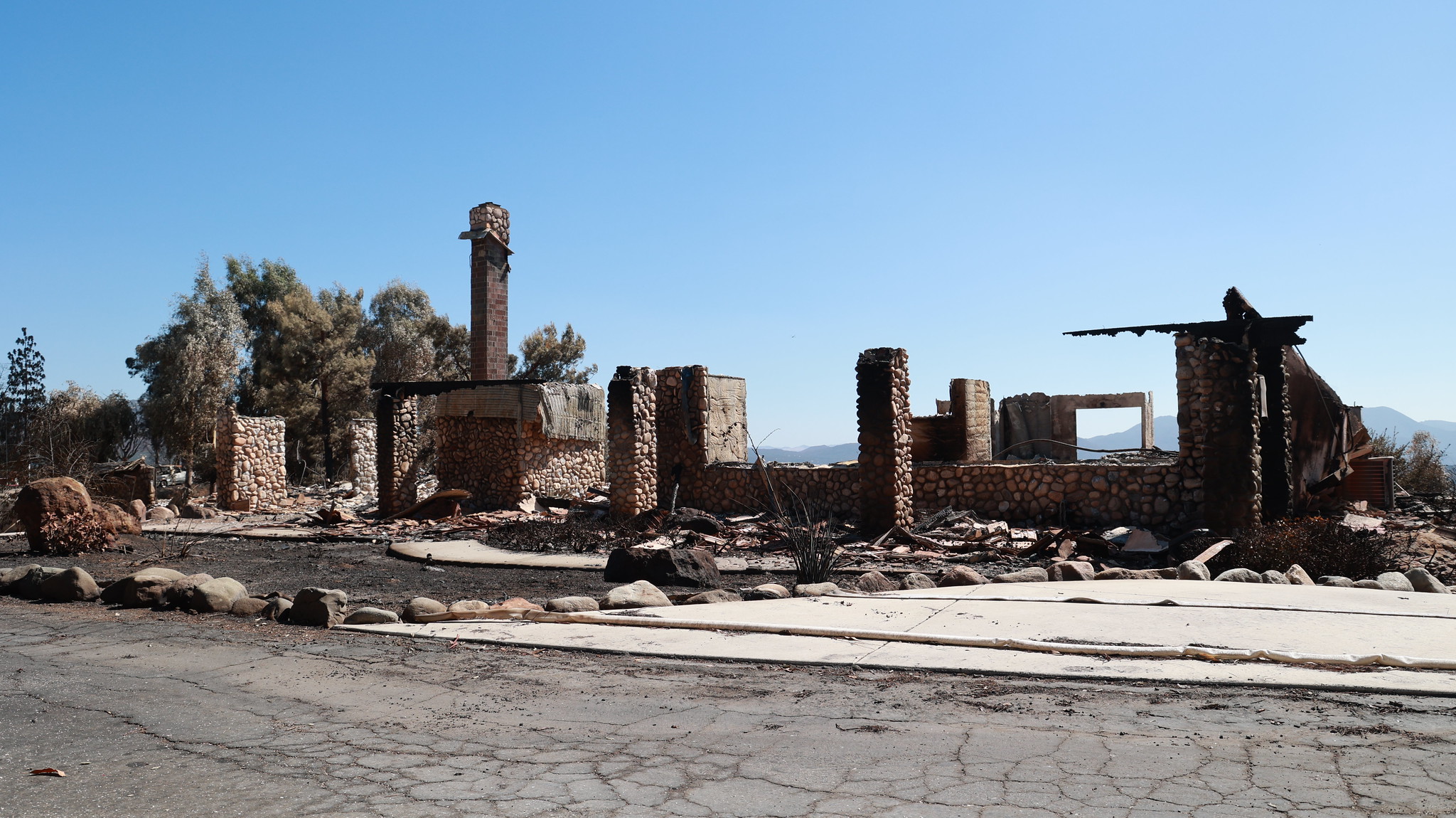
State Commission Adopts Report on Wildfire Insurance Crisis
November 7, 2024 – The nonpartisan Little Hoover Commission adopted a report on California’s ongoing property insurance crisis which was issued for public review earlier in the week. The report, which was developed over the course of 2024 through hearings, interviews, and public comment from impacted stakeholders, contains several recommendations to state lawmakers for addressing California’s insurance crisis for areas with high wildfire risk, including:
- Allowing insurers to use catastrophe models for pricing, but requiring that wildfire mitigations performed by homeowners are reflected in those models;
- Creation of an independent panel of experts to evaluate the usage of those models, rather than relying on the California Department of Insurance’s internal processes; and,
- Forming a state working group of wildfire experts to develop a minimum set of wildfire mitigation standards for homeowners and communities to undertake.
Meeting Showcases California's Momentum Toward Wildfire Resilience
Meeting Showcases California's Momentum Toward Wildfire Resilience
October 10, 2024
At the Task Force’s most well-attended meeting to-date, nearly 500 people gathered in South Lake Tahoe (and over 300 joined online) for the Sierra Nevada Regional Meeting. Hosted by the California Tahoe Conservancy and Tahoe Fund, the meeting featured several new tools that will revolutionize how California tracks and communicates progress toward improving wildfire and landscape resilience. Other topics covered included progress being made in the Tahoe Basin and the benefits of landscape fuels treatments to vibrant ecosystems and economically thriving communities.
REGIONAL MEETING AGENDA HIGHLIGHTS
• Director’s Report: Director Wright provided an update on recent accomplishments and investments in the Sierra Nevada and a preview of the 2025 Action Plan.
• Statewide Progress on Wildfire Resilience Efforts
– Interagency Treatment Dashboard
– Core Reporting Metrics
– Treatment Effectiveness.
• State & Regional Presentations
– Protecting & Restoring Tahoe: Tahoe partners shared their progress and priorities for advancing state, regional, and local goals through the Environmental Improvement Program.
– Focus on Wildlife – A Vision for Vibrant Ecosystems: A panel of state and regional leaders discussed next steps for evolving large-landscape projects to promote comprehensive climate, watershed, and wildlife benefits.
– Focus on Recreation – A Vision for Thriving Communities: A panel of regional leaders discussed how Sierra partners are broadening planning and implementation to promote recreation and rural economies.
Welcome & Opening Remarks
• Wade Crowfoot, CA Natural Resources Agency
• Kara Chadwick, US Forest Service
• Serra Smokey, Washoe Tribe of NV & CA
• James Settelmeyer, NV Dept. Conservation & Natural Resources
• Joe Tyler, CAL FIRE
Director's Report
• Patrick Wright, Task Force
Statewide Progress on Wildfire Resilience Efforts
Moderator: John Battles, UC Berkeley
• Alan Talhelm and Emily Brodie, CAL FIRE
• MV Eitzel, UC Davis
• Frank Bigelow, CAL FIRE
Tools:
• Monitoring, Reporting & Assessment Page
• Interagency Treatment Dashboard
• CAL FIRE’s Fuels Treatment Effectiveness Reports
Protecting & Restoring Tahoe
• Kacey KC, Nevada Division of Forestry
• Jason Vasques, Tahoe Conservancy
• Julie Regan, Tahoe Reg. Planning Agency
Focus on Wildlife – A Vision for Vibrant Ecosystems
Moderator: Erin Ernst, Tahoe Conservancy
• Stephanie Coppeto, US Forest Service
• Rachel Henry, US Fish & Wildlife Service
• Rich Adams, CA State Parks
• Rhiana Jones, Washoe Tribe of NV & CA
• Meghan Hertel, CA Natural Resources Agency
Focus on Recreation – A Vision for Thriving Communities
Moderator: Danna Stroud, GoBiz
• Amy Berry, Tahoe Fund
• Stew McMorrow, CAL FIRE
• Luke Hunt, Sierra Nevada Conservancy
• Michelle Abramson, Sierra Buttes Trails
• John Wentworth, MLTPA
Closing Remarks
• Task Force Co-Chairs

